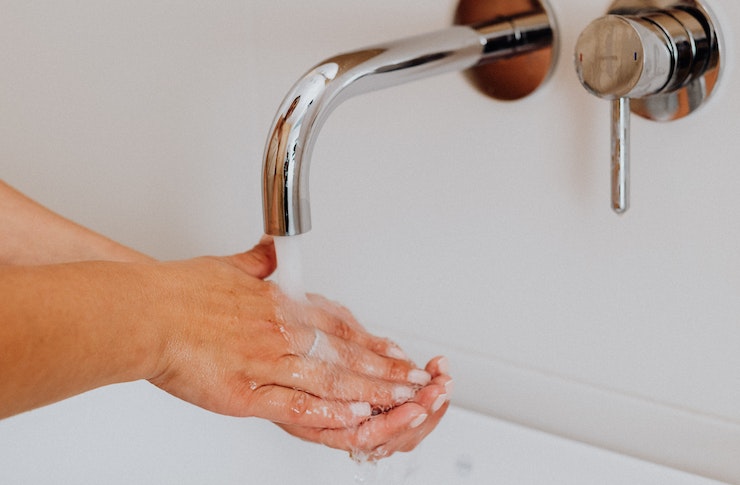Step-by-step installation guide for water cleansing fixtures in varied plumbing setups
This guide summarizes practical steps for installing water-cleansing fixtures such as bidet seats and WC attachments across common plumbing layouts, covering planning, tools, supply connections, electrical needs, and considerations for hygiene, retrofit choices, and water conservation.

Installing a water-cleansing fixture requires careful planning to match the device to your bathroom’s plumbing and electrical layout. Start by confirming the toilet bowl shape, location of the shutoff valve, available water pressure, and whether a nearby grounded outlet is reachable. Proper preparation minimizes surprises, supports sanitation goals, and helps determine if a simple retrofit seat or a full integrated fixture is the better choice.
This article is for informational purposes only and should not be considered medical advice. Please consult a qualified healthcare professional for personalized guidance and treatment.
What are plumbing and pressure considerations?
Before ordering, inspect the supply line and valve type and measure water pressure. Most fixtures accept common connection sizes such as 1/2” or 3/8”; confirm adapter needs for your setup. Typical household pressure ranges are suitable for the majority of fixtures, but very low pressure may require a booster pump and extremely high pressure should use a regulator to protect valves and nozzles. Accurate assessment of the supply routing and pressure supports reliable operation and reduces the risk of leaks that could affect bathroom finishes or hygiene.
How should you plan installation and electrical needs?
Map the installation area and note clearance around the fixture to keep controls accessible. Many advanced bidet seats need a nearby GFCI-protected outlet for heated seats, warm water, and electronic controls; battery-powered alternatives avoid electrical work but may lack features. Follow local electrical codes and keep outlets away from direct splash zones. Gather required tools—adjustable wrench, T-valve, flexible hoses, thread seal tape—and review the manufacturer’s instructions so the plumbing installation and any electrical connections are completed safely and to code.
How to approach retrofit and accessibility options?
Retrofit seats and attachments allow upgrading an existing toilet without replacing the fixture. Confirm compatibility with round or elongated bowls and seat-mounting patterns. For accessibility, prioritize models with simplified controls, remote operation, or tactile buttons that support users with limited mobility. Adjustable nozzle positions and variable water temperature improve comfort and hygiene. Retrofits are often less invasive and more sustainable than full replacements, since they reuse the existing plumbing while expanding sanitation and accessibility in the bathroom.
How to set nozzle, controls, and pressure for cleanliness?
Start nozzle and pressure setup on low settings and test incrementally. Align nozzle position to suit user anatomy and check self-cleaning or retractable nozzle features. Use the spray mode that balances cleanliness with minimal splash; many fixtures offer posterior and feminine modes with different spray patterns. Label settings or demonstrate use for household members to maintain consistent hygiene. Proper nozzle care and control calibration help maintain cleanliness while conserving water through efficient rinsing.
What maintenance and sanitation tasks are recommended?
Perform regular inspections of supply hoses, T-valves, and seals for signs of wear or leaks and replace components as recommended. Clean nozzles using manufacturer-approved methods and run self-clean cycles if available. Test GFCI outlets and keep electrical components dry to avoid hazards. Maintain a simple service log noting installation date and parts replaced to support long-term maintenance. These practices preserve sanitation, extend fixture life, and support sustainability by avoiding premature disposal or replacement.
How to maximize water conservation and sustainability?
Select fixtures with eco modes or adjustable flow settings that reduce water usage per cycle. Aerated sprays and efficient nozzle design can deliver effective cleansing with lower volume. When retrofitting, reuse existing plumbing where feasible to limit material waste and reduce installation labor. Choose models with replaceable parts and durable components to minimize lifecycle environmental impact. Combining efficient fixtures with mindful usage habits yields tangible water conservation while maintaining hygiene and accessibility.
Conclusion A successful installation balances plumbing and pressure checks, electrical planning, retrofit or integrated choices for accessibility, and careful setup of nozzle and control settings for effective hygiene. Regular maintenance preserves cleanliness and function, and selecting efficient, durable fixtures supports long-term water conservation and sustainability. For complex plumbing or electrical work, consult licensed professionals to ensure safe and code-compliant installations.






